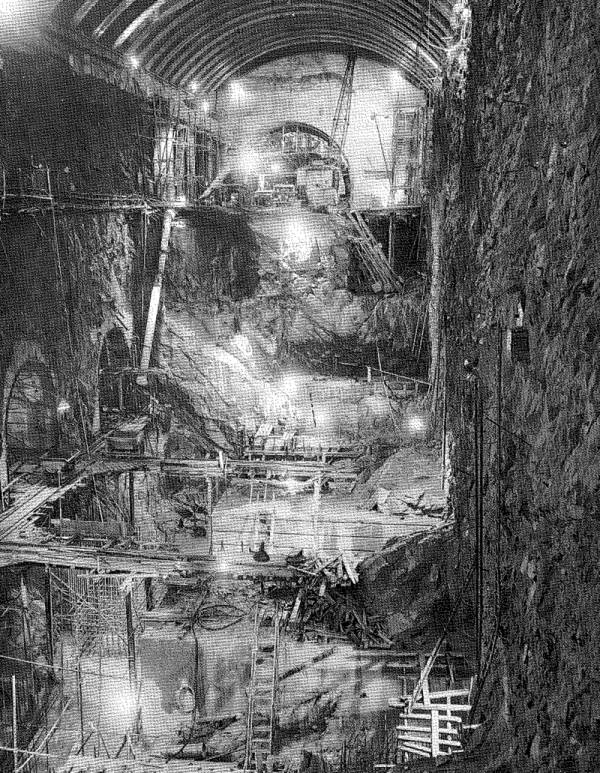Rock mechanics in the investigation and construction of Tumut 1 Underground Power Station, Snowy Mountains, Australia
In addition to these well-defined localized structures the rock mass is extensively jointed. The joint pattern is similar in both rock types, but the spacing of the joints is usually much closer in the gneiss than in the granite, and the character of the joint surfaces also differs. The joint pattern often is not easy to discern, but measurements show that most joints can be grouped into three principal sets (Fig. 4, a,b,c). There is a considerable range of strike and dip within each set:
Set a: Strike N. 40°–60° E, and dip 35° SE. These are parallel to fault A.
Set b: Strike N.30° E. and dip 65° W. to 80° E. Although grouped together there are probably two distinct sets, one dipping steeply west parallel to fault B, and the other dipping steeply east. The strike of these joints makes a small acute angle with the long walls of the machine hall.
Set c: Strike N. 130° E. and dip 8O° W, These joints are spaced 40–80 feet apart but are very persistent. A single joint may split into two or more closely spaced joints. The joint surfaces are rough and irregular, and many joints are gaping open to ¼ inch. The strike of these joints is nearly at right angles to the long walls of the machine hall.
Practically all the large ground-water inflows into the excavations occurred along the joints of set c, whereas sets a and b were practically dry.
In the gneiss the spacing of the joints of sets a and b is generally 6 inches to 2 feet with some areas of narrower and some of wider spacing. The joint surfaces are usually smooth and slickensided. They are dark green due to an almost continuous thin coating of chlorite.
Clay coatings are not common. Most joints are tightly closed.
In the granite the spacing of the joints of sets a and b is variable but generally in the range of 1 to 5 feet. The joints are sometimes curving, and many die out in short distances. Slickensided joints are much less common than in the gneiss, and most of them occur along the joints of set a and in set b parallel to fault B, Most of the joints are not coated.

Plate 2. – Machine Hall of T.1 Power Station, with Downstream Wall on Right. Excavation Completed
